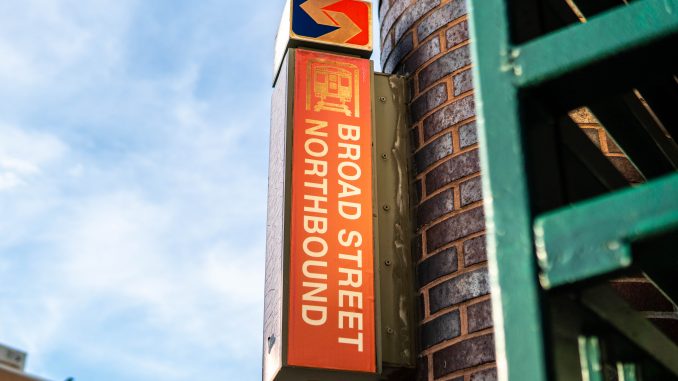
The Southeastern Pennsylvania Transportation Authority is proposing an approximately $40 million initiative to provide new tools, like online maps, apps, audio announcements and updated signage, to make the transportation authority’s rail transit services more accessible and easier for riders to navigate.
The Rail Transit Wayfinding Master Plan initiative, which is expected to be fully designed in 2022, includes recommendations for updating the signage, letters, colors, shapes and terminology at all of SEPTA’s rail transit system stops, like the Broad Street Line which includes the Cecil B. Moore and Susquehanna-Dauphin stations near Temple University’s Main Campus, to make them more consistent, according to a SEPTA press release.
The rebrand will assign one letter and a color to each city trolley or subway stop. For example, the Broad Street Line will be identified with a “B” on an orange background, and the Route 15 trolley running along Girard Avenue will be identified with a “G” on a square yellow background, said Lex Powers, manager of strategic planning at SEPTA.
Other impacted rail transit stops include the Market-Frankford Line, city and suburban trolley routes and the Norristown High Speed Line, according to the press release.
The new rail transit system, which is proposed to be renamed as SEPTA Metro, will be implemented sometime after 2022, Powers said.
SEPTA also wants to make the rail transit system more accessible for non-native English speakers and people with disabilities, Powers said. Most signs for Philadelphia’s public transit systems involve full words and sentences. Eliminating the names of transit lines and replacing them with just one letter will remove the confusion of having to decipher a transit sign.
SEPTA’s regional rail and bus system will be addressed in the future, Powers said.
Linh Nguyen, a freshman data science major, takes the Broad Street Line from Main Campus to visit City Hall and her relatives in South and West Philadelphia, she said. Navigating the rail transit system’s directions is difficult for Nguyen, whose first language is Vietnamese.
“It’s quite confusing because, at some stations, like there’s no navigators, so I have to look up on Google Maps to find the right directions,” said Nguyen. “I have to, like, repeat it, repeatedly read the instructions, and it’s quite confusing.”
Despite primarily relying on her phone to navigate to destinations, the proposed SEPTA changes could make the rail transit system easier to navigate if her phone does not have service, Nguyen said.
SEPTA is accepting feedback from the public on the proposed recommendations for improving the system’s signage after spending the last 18 months researching and reaching out to stakeholders to develop the recommendations, Powers said.
Layla Myers, a junior anthropology major, who commutes 20 miles from Bensalem, Pennsylvania, is worried that these changes from SEPTA will be confusing to people who have used the rail transit services for a while.
“I feel like, like other people who have been getting on, like it might be a bit confusing at first for the different names, like where it’s actually going,” Myers said.
The SEPTA app also experiences glitches, said Mark Iskander, a second-year student at the Kornberg School of Dentistry.
“I would love it if they saved my schedule and fixed some of the bugs,” Iskander said.
Approximately 50 percent of Temple students, faculty and staff use a form of public transit in an average week to commute to and from campus, according to the university’s 2019 sustainability report.
“It’s completely rethinking the way that we want people to perceive SEPTA, perceive our services and how we’re communicating about how you can best use transit in the Philadelphia area,” Powers said.



Be the first to comment